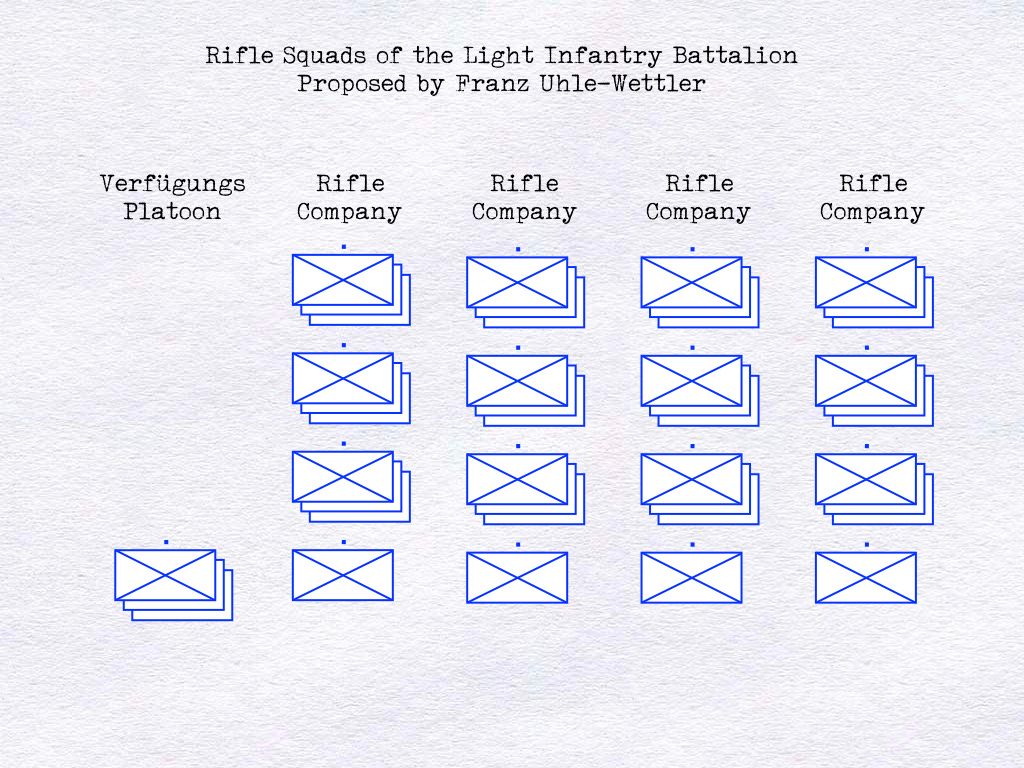During the 1970s, the army of the Federal Republic of Germany began to acquire infantry fighting vehicles. Designed to protect main battle tanks against a variety of dangers, these were, in essence, light tanks that, in addition to their weapons, carried a handful of infantrymen. Ironically, the very prosperity that enabled the purchase of these weapons reduced opportunities to use them. That is, by enabling aggressive reforestation and the building of new urban areas, the economic growth of the fifties, sixties, and seventies compartmentalized the countryside of Western Europe, turning “tank country” into “light infantry country.”
In 1980, a recently retired officer of the West German Army, Lieutenant General Franz Uhle-Wettler, proposed an approach to the defense of his country that exploited this transformation. Rather than deploying formations equipped with tanks and infantry fighting vehicles, he argued, West Germany should raise a large number of infantry battalions that, free from the burdens imposed by armored vehicles, would operate in cities, towns, and forests.
The basic building block of Uhle-Wettler’s light infantry battalions was the triangular rifle squad. Modeled after the rifle squad adopted by the US Marine Corps in 1944, this unit consisted of a sergeant and three four-man teams (Trupps.) Each of the latter, Uhle-Wettler wrote, would be a “small society of comrades in battle ’ (kleine Kampfgemeinschaft.)” As such, it would be capable of such “independent special missions such as reconnaissance, security, and the over-watching of withdrawals.”
Uhle-Wettler’s plan for the armament of each Trupp differed somewhat from that of the triangular squad of the American Marines. Where each fire team in the Marine Corps was explicitly concerned with the care, feeding, and protection of a single automatic weapon, each Trupp could be armed in a variety of ways. This policy of “task-arming” reflected the belief that the internal cohesion of the Trupp was far more important than the weapons that it carried.
Most, but not all, of the triangular squads in the scheme proposed by Uhle-Wettler were grouped into rifle platoons, each of which consisted of three such squads and a four-man command team. The leader of the command team, who was the fourth sergeant in the platoon, also served as the deputy of the platoon leader. (The other members of the command team were trained in both the operation of radios and the delivery of messages by hand.)
Most, but not all, of the rifle platoons were assigned to rifle companies, which also possessed a heavy weapons platoon and a small “leadership echelon” (Führungsstaffel.) The latter consisted of a three-man communications team, a six-man company leadership team, and a spare rifle squad.
The four runners of the company leadership team, who reported directly to the first sergeant (Hauptfeldwebel), preserved the rifle platoons from the need to employ members of rifle squads to deliver messages. Likewise, the spare rifle squad (Verfügungsgruppe) allowed the company commander to fulfill squad-sized tasks without depriving a rifle platoon of a third of its men. Specifically, the Verfügungsgruppe provided the company commander with the means of responding to crises, sending out small patrols, and exploiting opportunities.
Marvelous to say, the heavy weapons platoon was a unit without a commander. Rather, it was a set of six autonomous elements: two anti-tank squads, two mortar squads, and two five-man “leadership teams” (Führungstrupps.)
The curious structure of the heavy weapons platoon allowed the company commander to employ his mortar and anti-tank squads in a variety of ways. He could, if he saw fit, attach individual squads to particular rifle platoons. Alternatively, he could employ the leadership teams to create task forces composed of two or three autonomous squads. (Though he does not say so explicitly, it is possible that Uhle-Wettler imagined the assignment of the company’s Verfügungsgruppe to such temporary units.)
Uhle-Wettler refrained from specifying the type of weapons to be issued to these squads. Thus, the mortars of the mortar squads might be 60mm light mortars or 81mm medium mortars. Likewise, the anti-tank squads might carry “dumb” weapons like the Swedish Carl Gustav or the Italian Folgore, or guided weapons like the MILAN.)
Uhle-Wettler wanted the heavy weapons squads to be able to transport their own weapons and ammunition without borrowing men from the rifle companies. To this end, he provided each of his mortar squads with fifteen men and each of his anti-tank squads with ten men. (In each squad, three of the men, the squad leader and two team leaders, ranked as sergeants.)
Each of the battalions that Uhle-Wettler proposed consisted of four rifle companies. In addition to this, he provided each battalion with a Verfügungs platoon that was organized and equipped in the same way as a rifle platoon of a rifle company. As might be imagined, the battalion commander was to make use of this spare platoon in much the same way as his company commanders employed their Verfügungs squads.
Source: Franz Uhle-Wettler, Gefechtsfeld Mitteleuropa , Gefahr der Übertechnisierung von Streitkräften (Munich: Bernard & Graefe, 1980)
You can find the typescript of a translation of this work into English at the Military Learning Library and in this folder on a Google Drive.
For Further Reading:
To Subscribe, Share, or Support:











The underlying tactical conundrum, defense of an invaded country which has a mix of urbanized and rugged natural terrain, reappears in ... Taiwan. I have been intermittently thinking about Uhle-Wettler as a possibly guiding spirit for a low-cost, mass-mobilized defense force in Taiwan. For the price of one surface vessel, which will be destroyed in the first 30 minutes of the preliminary missile barrage, a lot of more relevant combat power could be created. Imagine that the PLA gets some large force ashore. Imagine further that some of that force breaks out of its beach head. It will not confront aviation (destroyed on the ground), or heavy units (destroyed or pinned to the cordon around the invasion beaches), so what then? Give up? How about confront the PLA breakout force with a hornets nest of militia armed with man-portable ATGMs and other weapons, people who know the local area and have rehearsed their response on the actual fighting terrain, who are trained to shoot and scoot. From my proverbial basement keyboard, though not in the proverbial pajamas, to the ears of the Taiwanese high command!